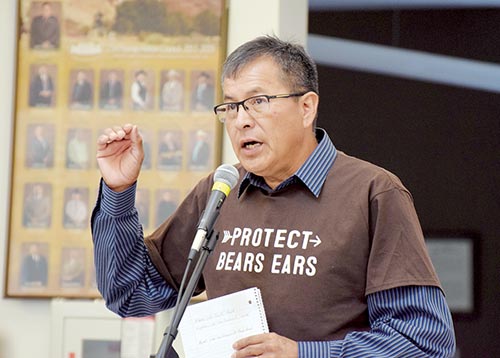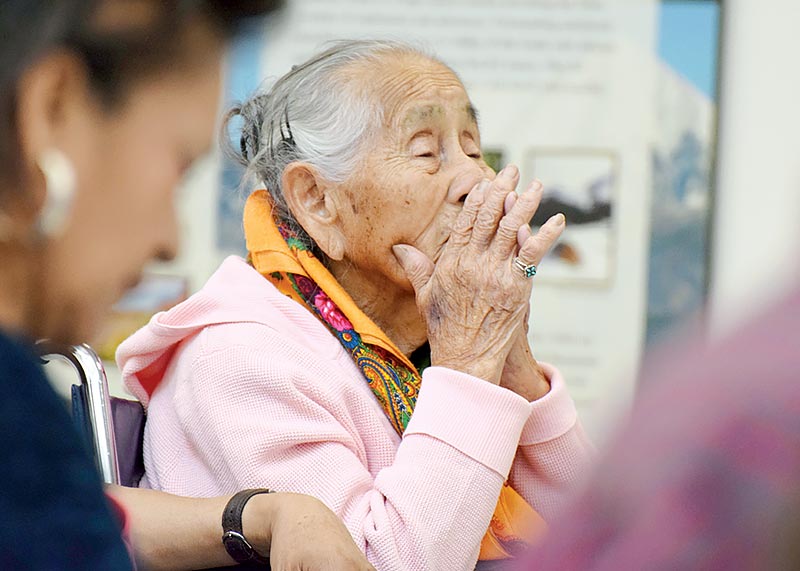
Conservation group: Bears Ears proposal has deep roots

Navajo Times | Krista Allen Kenneth Maryboy, member of the Utah Diné Bikéyah board of trustees, talks about the federal designation of Bears Ears March 20 during UDB’s Bears Ears meeting at the Welcome Center in Tsébii’ndzisgaii, Utah.

Navajo Times | Krista Allen
Helen Nez Yellowman, 85, from Montezuma Creek, Utah listens attentively March 20 during Utah Diné Bikéyah’s Bears Ears meeting at the Welcome Center in Tsébii’ndzisgaii, Utah.
OLJATO-TSÉBII’NDZISGAII, Utah
A secular cathedral in southeastern Utah is at risk. But a coalition of five tribes, with support from conservation groups, is pushing for federal designation, seeking to protect 1.9 million acres of culturally significant land.

Navajo Times | Krista Allen
Kenneth Maryboy, member of the Utah Diné Bikéyah board of trustees, talks about the federal designation of Bears Ears March 20 during UDB’s Bears Ears meeting at the Welcome Center in Tsébii’ndzisgaii, Utah.
The land known as Bears Ears – named for twin buttes that jut out over the horizon – has become a conservation battleground.
“We want to preserve,” said Leonard Lee, vice chair of the Utah Diné Bikéyah board of trustees, in Navajo at a recent public meeting on the proposal. “A legislative process is at the forefront.”
In addition to being a mecca for outdoorsy people, Bears Ears is home to more than 100,000 archeological sites, ranging from lithic scatter to granaries to complex villages, which are considered sacred by several American Indian tribes, including the Diné and the Kiis’áanii, who have long-standing ties to the landscape.
“Non-Natives told us, though, that Bears Ears isn’t Native land and that it belonged to the Anasazi,” Lee explained.
Some tribes, according to the Bears Ears Intertribal Coalition, trace their ancestry to the ancient peoples who populated the region since time immemorial. Some Diné and Nóóda’í (Ute) still use the land.
“We don’t want our children and grandchildren to go over the fence and be a common criminal,” Lee said. “This is our land.”
Bears Ears, though, has been a target for looters and grave robbers. Between 2014 and 2015, more than a dozen serious looting cases were reported.
From small-scale theft to ancestral remains being tossed aside to graves being plundered, these acts, the coalition argues, are threatening the past and the future of sacred archeological sites in Bears Ears.
And recently, 26 American Indian tribes with ancestral, historical, and contemporary ties to Bears Ears expressed their support for protecting this landscape through a conservation proposal under the Antiquities Act of 1906.
To read the full article, pick up your copy of the Navajo Times at your nearest newsstand Thursday mornings!
Are you a digital subscriber? Read the most recent three weeks of stories by logging in to your online account.








 Highway 264,
Highway 264, I-40, WB @ Winslow
I-40, WB @ Winslow